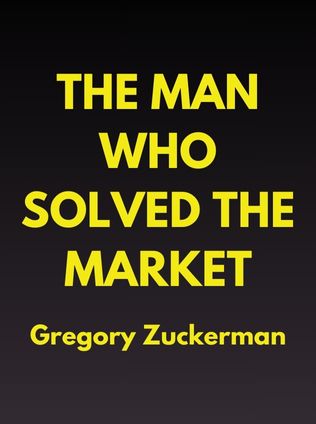
The Man Who Solved the Market
How Jim Simons Launched the Quant Revolution
By Gregory Zuckerman
Published 11/2019
About the Author
Gregory Zuckerman, a senior writer at The Wall Street Journal, has made a name for himself through his in-depth and insightful reporting on the financial industry. Over the years, Zuckerman has written extensively about the personalities and events that have shaped the modern financial landscape. In his book The Man Who Solved the Market, Zuckerman turns his attention to Jim Simons, a mathematician who, through his unparalleled approach to quantitative investing, fundamentally altered how financial markets operate. Zuckerman's narrative is rich with detail, weaving together Simons' personal history, his professional achievements, and the broader impact of his work on Wall Street and beyond.
Main Idea
The central thesis of The Man Who Solved the Market is the extraordinary story of Jim Simons, whose love for mathematics led him to create Renaissance Technologies, one of the most successful hedge funds in history. Simons' story is not just one of financial success; it is also a tale of how an abstract field like mathematics can be applied to solve complex problems in unexpected ways. By leveraging mathematical models and advanced algorithms, Simons was able to consistently beat the market, challenging traditional notions of investing and setting the stage for the rise of quantitative trading. Zuckerman’s book delves into how Simons’ intellectual curiosity and unique insights into patterns and data revolutionized finance, making his methods a new standard in the industry.
Table of Contents
- The Early Years: A Love of Mathematics
- From Academia to the Institute for Defense Analyses
- The Birth of Renaissance Technologies
- Building the Quantitative Model
- The Quant Era and Simons’ Legacy
The Early Years: A Love of Mathematics
Jim Simons' fascination with mathematics began early in his life. Born in 1938 in Brookline, Massachusetts, Simons was the son of a shoe factory owner, growing up in a middle-class Jewish family. Even as a child, Simons displayed a natural aptitude for numbers, solving complex mathematical problems with ease. As he matured, this talent grew into a profound appreciation for the beauty and elegance of mathematics.
An Intellectual Pursuit
As a student, Simons was deeply committed to the study of mathematics, driven not by the promise of financial reward but by the intellectual challenge it presented. Mathematics, for Simons, was a way to unlock the mysteries of the universe. Zuckerman describes how Simons was captivated by the idea that mathematics could reveal deeper truths about the world around us, much like a painter finds meaning in their art. This perspective shaped Simons' approach to his academic and professional life, where he sought to apply mathematical principles to solve complex problems.
"Simons was motivated by the thrill of new discoveries and the exploration of unsolved mysteries." - Gregory Zuckerman
Pure vs. Applied Mathematics
Simons' early academic work was primarily in the realm of pure mathematics, a field focused on abstract concepts and theoretical problems. Pure mathematicians, like Simons, are driven by the pursuit of knowledge for its own sake, rather than for practical applications. However, Simons' career would eventually bridge the gap between pure and applied mathematics, as he began to see the potential for using mathematical theories to address real-world challenges, particularly in the financial markets.
Pure mathematics is often seen as an intellectual pursuit, one that delves into abstract concepts such as number theory, algebra, and geometry. Applied mathematics, on the other hand, seeks to solve practical problems in fields like engineering, physics, and economics. Simons' journey from pure to applied mathematics illustrates the transformative power of applying theoretical knowledge to real-world problems, a theme that is central to his later success in the world of finance.
Sign up for FREE and get access to 1,400+ books summaries.
You May Also Like
Rich Dad Poor Dad
What the Rich Teach Their Kids About Money - That the Poor and Middle Class Do Not!
By Robert T. KiyosakiFreakonomics
A Rogue Economist Explores the Hidden Side of Everything
By Steven D. Levitt and Stephen J. DubnerI Am Malala
The Story of the Girl Who Stood Up for Education and Was Shot by the Taliban
By Malala Yousafzai



















